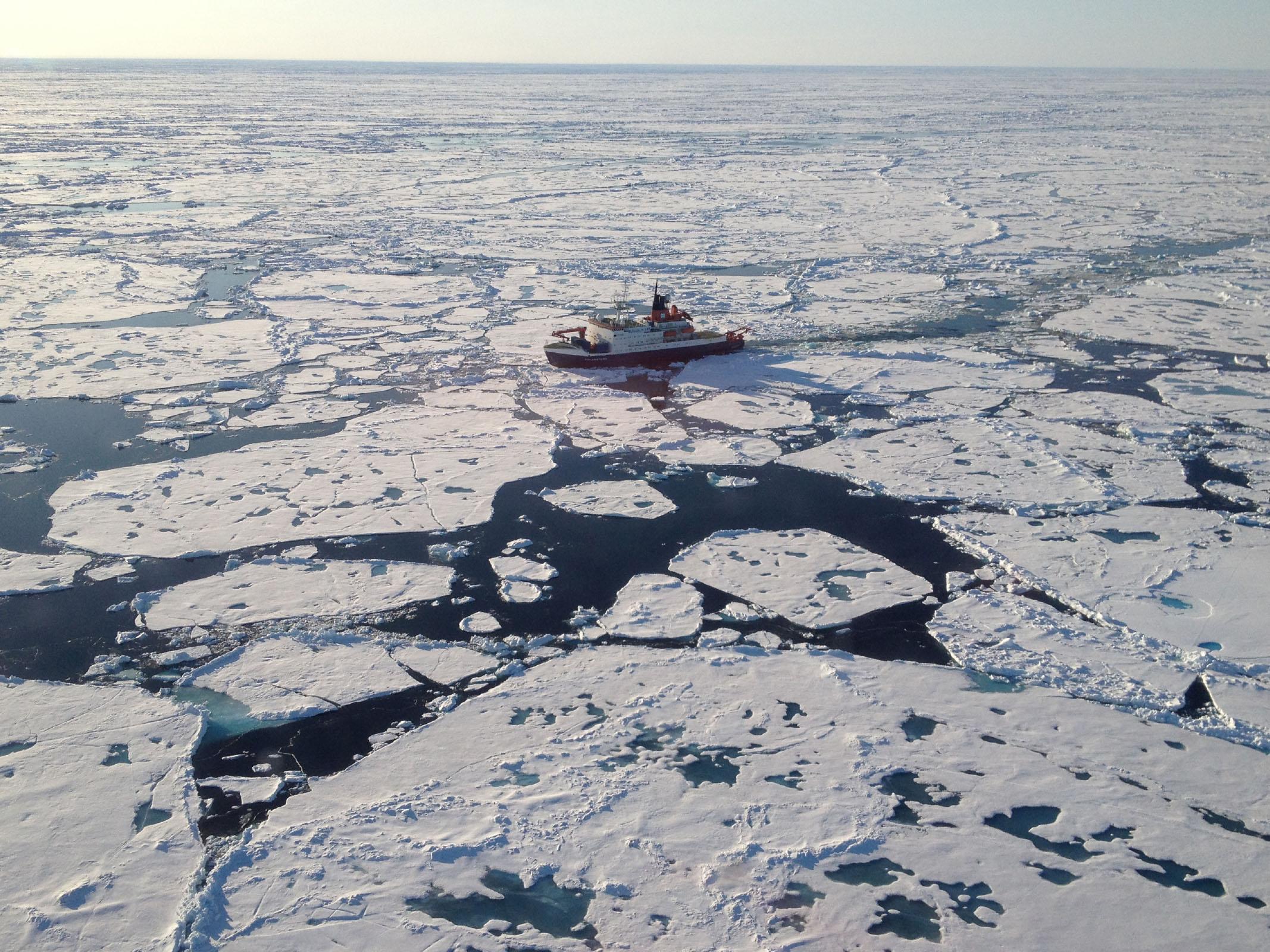Plastic pollution: Arctic sea ice contains huge quantity of microplastics, reveals new analysis
Scientists say study shows ‘nowhere is immune’

Scientists have found an unprecedented number of microplastics frozen in Arctic sea ice, demonstrating the alarming extent to which they are pervading marine environments.
Analysis of ice cores from across the region found levels of the pollution were up to three times higher than previously thought.
Each litre of sea ice contained around 12,000 particles of plastic, which scientists are now concerned are being ingested by native animals.
Based on their analysis, the researchers were even able to trace the tiny fragments’ paths from their places of origin, from fishing vessels in Siberia to everyday detritus that had accumulated in the infamous Great Pacific Garbage Patch.
“We are seeing a clear human imprint in the Arctic,” the study’s first author, Dr Ilka Peeken, told The Independent.
“It suggests that microplastics are now ubiquitous within the surface waters of the world’s ocean,” said Dr Jeremy Wilkinson, a sea ice physicist at the British Antarctic Survey who was not involved with the study.
“Nowhere is immune.”
Dr Peeken and her team at the Alfred Wegener Institute for Polar and Marine Research collected ice core samples over the course of three expeditions on the research icebreaker Polarstern.
Their voyages covered five regions along the Transpolar Drift and Fram Strait, which channel sea ice from the Central Arctic to the North Atlantic.
Not only is polar sea ice acting as a store for ocean plastic that could potentially be released as global temperatures get warmer due to climate change, the movement of sea ice could be depositing microplastics in areas that were previously plastic-free.
The researchers analysed their samples using a device known as a Fourier-transform infrared spectrometer.
This enabled them to examine the ice cores layer by layer and in great detail, working out the origins of even the tiniest shards of plastic.
“What is interesting also is you have very localised sources – ship paint particles and cigarette butts and stuff like that,” said Dr Peeken.
“We also see polyethylene, a very light polymer which is found in really high numbers particularly in the Central Arctic. We think that there is an incoming flow from the Pacific so that could show that is coming from that region.
“We see a large impact of plastic pollution coming from the urban areas – a lot is coming from the Atlantic and from the Pacific.”
In their paper, published in the journal Nature Communications, the scientists speculate that this polyethylene could originate from the Great Pacific Garbage Patch.
A study released earlier this year revealed 80,000 tonnes of plastic are floating in this area of the Pacific Ocean, and nonprofit technology firm The Ocean Cleanup recently revealed its first attempt to remove some of it.
Plastic waste across the world: in pictures
Show all 15Besides this plastic being channelled in from outside the polar regions, the researchers were also able to link some of the microplastics they found to local pollution in the Arctic Ocean itself.
In ice cores collected in Siberia, the predominant forms of microplastic included paint particles from ships and nylon waste from fishing nets.
Over half the microplastic particles trapped in the ice were less than a twentieth of a millimetre wide, meaning they could easily be ingested by small Arctic creatures.
“While we don’t yet know the full extent of the impact of microplastics on the health of the marine environment or humans, the growing body of evidence suggests microplastic pollution is a contaminant of environmental and economic concern,” said Dr Pennie Lindeque, lead plastics scientist at Plymouth Marine Laboratory, who was not involved with the study.
“As microplastics can look like prey for marine animals and are small in size they may be eaten by a wide range of species, from zooplankton – small animals at the base of the food web – to seabirds and whales, potentially impacting marine ecosystems and the food chain.”
Other scientists welcomed the research as “a benchmark study” that demonstrated the extent to which plastics both big and small have covered the world.
However, given the scale of the global plastic crisis, they said its conclusions did not come as a surprise.
Professor Richard Thompson, an ocean plastic researcher at the University of Plymouth who first coined the use of the term microplastics, said this study builds on work he conducted to establish their concentration in Arctic ice.
“The study reinforces what is already clear to many marine scientists – that plastic debris is a highly persistent form of contamination that can accumulate in considerable concentrations even in remote locations far from the likely points of entry to the ocean,” he told The Independent.
“What is increasingly clear is the urgency with which we need to take steps to halt the flow of plastic debris to the ocean.
“A key priority in my view is interdisciplinary research focused on delivering appropriate evidence to inform industry and policy on the most appropriate solutions.”
Subscribe to Independent Premium to bookmark this article
Want to bookmark your favourite articles and stories to read or reference later? Start your Independent Premium subscription today.

Join our commenting forum
Join thought-provoking conversations, follow other Independent readers and see their replies